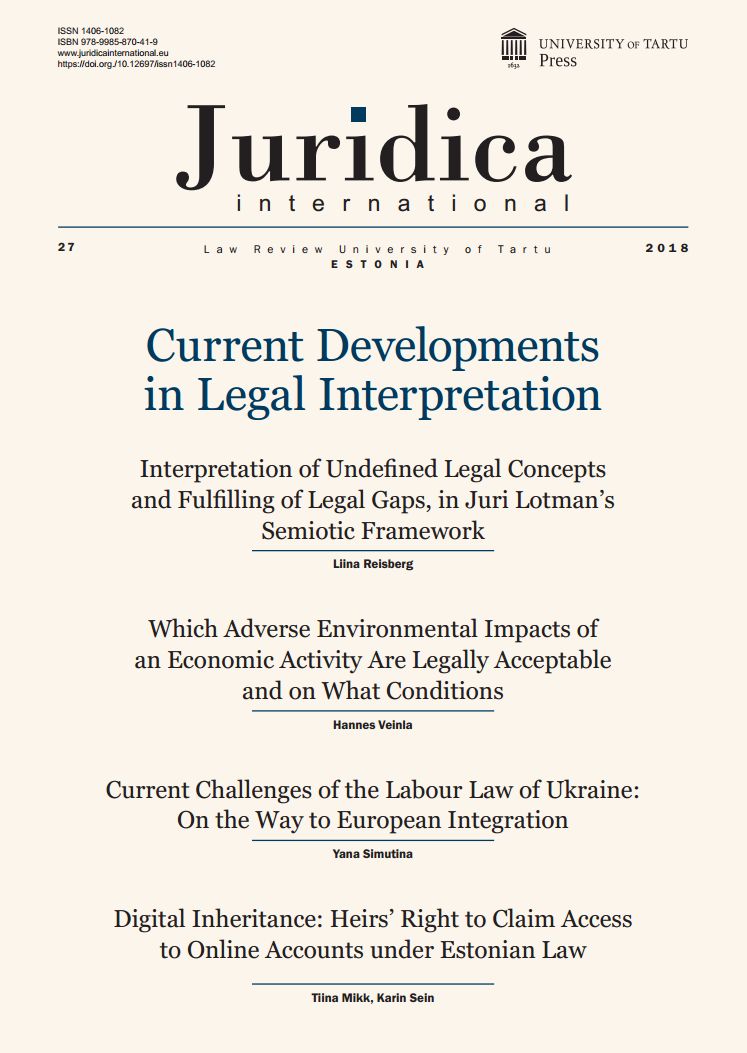Which Adverse Environmental Impacts of an Economic Activity Are Legally Acceptable and on What Conditions
DOI:
https://doi.org/10.12697/JI.2018.27.06Keywords:
environmental nuisance, environmental risk, environmental hazard, precautionary principle, prevention principleAbstract
The general aim of Estonian environmental law is reduction of environmental nuisances to the greatest extent possible, so as to protect the environment and human health, well-being, property, and cultural heritage. Hence, Estonian environmental law is not radically ‘green’: the aim is not to fully and unconditionally avoid environmental nuisances, since the functioning of human society and increasing of our prosperity are not possible without certain negative impacts on the environment. A fairly clear differentiation between environmental risks and hazards, in combination with the corresponding legal principles (of precaution and prevention), is characteristic of Estonian law.
One of the main concerns with respect to plans and activities with a likely adverse environmental impact is whether the activity planned could cause environmental hazards in addition to environmental risks and, consequently, whether the precautionary principle or instead the preventive principle should be applied. Proven or assumed environmental nuisances caused by the activity in question do not necessarily need to be reduced or prevented; this duty applies only when a higher threshold is crossed – that is, when the environmental risk and/or hazard limit is exceeded. Hence, for plans and projects it has to be established whether the proposed activity actually would cause environmental risks and/or hazards. In the case of environmental risks (i.e., in situations wherein it is possible for an environmental nuisance that must be reduced to occur), the goal is not a priori prohibition of the activity but the application of measures that reduce the risk proportionally, where those measures might be carried out by such means as attaching additional conditions to environmental permits. Once the measures are set forth, it is up to the operator to decide whether meeting the prescribed conditions is feasible or, instead, the planned activity would be economically unreasonable under those conditions. When the probability of pollution occurring is considered great enough, there is deemed to be an environmental hazard, which must be prevented. Whether a hazard exists or not must be revealed in the course of further (scientific) research. Another important consideration is that an environmental hazard or a significant environmental nuisance needs to be tolerated in cases wherein all three of the following conditions are fulfilled: the activity is rendered necessary on account of compelling interest, there are no reasonable alternatives for safeguarding this interest, and the necessary measures have been taken to reduce the environmental hazard or significant environmental nuisance.


